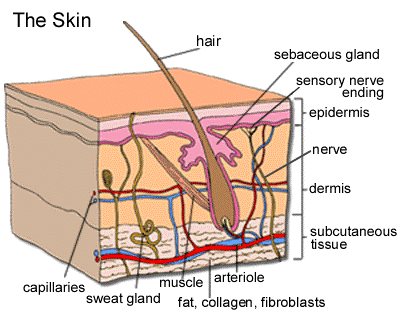Burn Wound Skin Depth
How are burns identified in degrees?
Burns are talked about in degrees. The degree depends on how deep the burn has gone in the skin layers.What are the different degrees and what do they mean?

Superficial burns. Also called 1st degree burns. These burns affect only the outer (epidermis) layer of skin. The burn site is red, painful, and dry. There are no blisters. Mild sunburn is an example. Tissue damage is rare.
Partial thickness burns. Also called 2nd degree burns. These burns involve the epidermis and part of the dermis layer of skin. The burn site looks red, moist, or swollen. There may be blisters. It is painful because the nerve endings are exposed.
Full thickness burns. Also called 3rd degree burns. These burns destroy the epidermis and dermis. Full thickness burns may also damage the bones, muscles and tendons in the area. The burn site appears dry, white, or charred. There is no feeling in the area since the nerve endings are destroyed.



